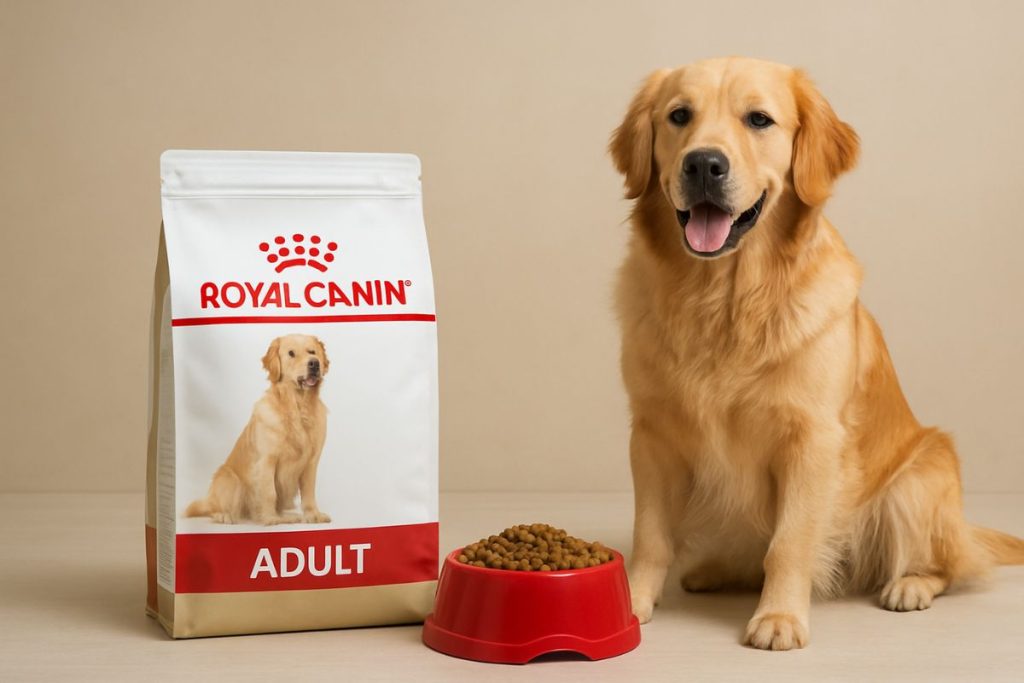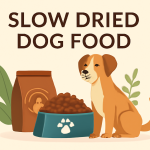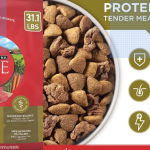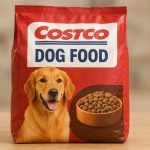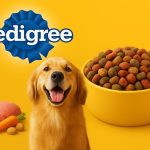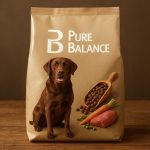Great. I’ll create a 4000-word, SEO-optimized blog post on the topic ‘Royal Canin Dog Food: Tailored Nutrition for Pets’. It will be structured for maximum search visibility, including the main keyword ‘hills dog food’ and secondary keywords such as ‘eukanuba dog food’, ‘hypoallergenic dog food’, ‘best dog food for senior dogs’, and ‘salmon dog food’.
The article will follow current 2025 SEO standards—featuring a compelling meta title and description, keyword integration at optimal density, a clear heading structure, scannable formatting with lists and bullet points, multimedia optimization, schema-marked FAQs, and internal/external links. I’ll let you know when the full draft is ready for your review.
Meta Title: Hills Dog Food: Royal Canin Tailored Nutrition for Pets
Meta Description: Discover how Hills Dog Food and Royal Canin deliver tailored nutrition for pets. Learn about breed-specific diets, hypoallergenic options, and senior nutrition.
Hills Dog Food vs Royal Canin: Tailored Nutrition for Pets
In today’s pet food market, customized nutrition is more important than ever. With over 1 billion pets worldwide and roughly one-third of households owning a dog, owners demand high-quality, science-backed diets. Global dog food sales are soaring – the market is projected to grow from about $51.3 billion in 2025 to $91.8 billion by 2035. This surge is driven by pet owners humanizing their pets and investing in premium nutrition. In fact, industry surveys indicate many dog owners shop for pet food about every 2–3 weeks, spending roughly $17 each trip. This high level of engagement drives quick adoption of trends (grain-free, organic, etc.). For instance, sales of “human-grade” dog food products jumped over 10% in 2024. Leading brands like Hills Dog Food and Royal Canin emphasize precise, tailored formulas developed by veterinarians and nutritionists. For example, Royal Canin invests heavily in breed- and life stage-specific research to ensure each formula meets unique needs. Hill’s Science Diet focuses on clinical nutrition for health issues like weight management, digestive care, and skin health. Both brands also offer prescription diets for conditions like kidney disease and allergies. In this guide, we’ll explore Royal Canin’s science-driven approach and compare it with Hill’s strategy. We’ll also highlight specialty diets (such as hypoallergenic dog food for sensitive pets and formulas tailored for senior dogs), as well as key ingredients like salmon oil that support healthy skin, coat, and joints. Our goal is to help you choose the best diet to keep your furry companion healthy and thriving.
Industry Trends in Pet Nutrition
The dog food industry is rapidly evolving. In recent years, trends like “natural” ingredients, high-protein grain-free recipes, and human-grade components have surged in popularity. Data from 2024 shows strong growth in premium pet food segments, such as fresh/frozen dog meals delivered to the home. However, traditional kibble and canned food still make up the majority of sales. Interestingly, only a small percentage of dog food products currently promote sustainability. One industry report noted that just 2% of dog food packaging included sustainability claims, suggesting there is growing opportunity in this area.
Pet owners are also influenced by human food trends. Many expect their dogs’ diets to include “superfoods” seen in health diets. Ingredients like blueberries, spinach, coconut oil, and even turmeric have found their way into some pet foods, touted for antioxidant or anti-inflammatory properties. However, vets remind owners that these are supplementary: a dog’s diet should still be balanced first. (Crucially, many human foods are unsafe for dogs—chocolate, grapes, onions, garlic, and xylitol-sweetened products can be toxic—so always consult a vet before giving any “human” treats.)
Meanwhile, direct-to-consumer (DTC) channels have expanded. The COVID-19 pandemic accelerated online purchasing of pet food, and subscription services for pet meals and treats have become mainstream. This means many owners today pick foods based on convenience as well as nutrition, which further drives the market to offer variety and innovation. Finally, demographic shifts impact the market. The average household age for dog owners is rising, meaning more senior pets. This increases demand for geriatric nutrition and joint supplements. At the same time, younger dog owners often treat pets like family, leading to an interest in gourmet and customizable meals. The industry expects smart feeding gadgets and apps to grow as part of this trend.
Even with these trends, one thing remains clear: evidence-based, vet-backed nutrition retains trust. Brands like Royal Canin, Hill’s, and Eukanuba invest in research to ensure their tailored diets deliver proven benefits. Pet owners are advised to balance trendy claims with science and always check nutrient adequacy.
Why Tailored Nutrition Matters
Every dog is unique – their optimal diet depends on factors like breed, size, age, and activity level. Unlike “one-size-fits-all” dog foods, tailored nutrition accounts for these differences. Customized diets can address common issues like joint problems, digestive sensitivities, and obesity before they start.
- Breed-specific needs: Different breeds have different risks and preferences. For example, Royal Canin designs Bulldog formulas with joint-support nutrients and an easy-to-chew kibble, while its Persian cat food targets fur care and hairball control.
- Life stage nutrition: Puppies need more protein and calories to grow, while senior dogs often need fewer calories and more fiber to maintain a healthy weight and digestion.
- Activity level: High-energy or working breeds burn more calories and may benefit from protein- and fat-rich diets. Less active or indoor pets do better on maintenance formulas.
- Health conditions: Many dogs have specific health concerns. Hypoallergenic formulas help dogs with food sensitivities (more on this below), while urinary care diets can prevent bladder stones. Matching food to your dog’s life stage and health can improve longevity and quality of life.
Tailored diets optimize the balance of proteins, fats, carbohydrates, vitamins, and minerals. They can strengthen immunity, promote healthy skin and coat, and improve digestion. By choosing a diet designed for your dog’s profile, you help prevent breed-related issues and support long-term wellness.
Royal Canin: Precision Nutrition for Every Pet
Royal Canin’s philosophy is “one dog at a time.” The brand offers an extensive range of wet and dry foods scientifically formulated to meet the unique nutritional needs of dogs of all sizes and life stages. Each recipe is backed by research and high-quality ingredients, aimed at delivering optimal health for your dog. Whether a pet has a sensitive stomach, weight issues, or even a specific genetic condition, Royal Canin often has a formula to match.
- Breed-specific diets: Royal Canin is well-known for creating formulas for individual breeds. For example, its Bulldog formula includes joint-support nutrients and a specialized kibble shape for strong jaws, while its formula for German Shepherds supports digestive health (since some lines have sensitive tummies).
- Size-specific formulas: Dogs come in all sizes, from teacup to giant. Royal Canin’s product line spans toy, small, medium, large, and giant breeds, each with kibbles and nutrients tailored to size-specific metabolism.
- Life-stage focus: The brand tailors diets for puppies, adults, and seniors. Puppy foods include DHA and higher protein for brain and muscle development, while senior foods adjust protein/fat ratios and add vitamins for aging dogs.
- Targeted health solutions: Royal Canin formulates diets for digestive care, urinary health, skin & coat, joint support and more. For example, their veterinary Hypoallergenic diet uses hydrolyzed proteins to reduce allergic reactions. They also have Heart Support diets (with low sodium and added taurine) and Dental diets with kibble that helps reduce plaque.
- Palatability and safety: Royal Canin tests flavors and shapes to suit even picky eaters. All ingredients go through strict quality control, and each is included for a specific purpose.
Royal Canin’s breed-specific dog food range demonstrates how the brand tailors kibble shape and nutrients to different breeds.
The result of this research-driven process is a line of diets that maximize health benefits. Royal Canin’s website notes every formula is balanced to support a dog’s specific needs. For instance, sensitive small breeds get extra prebiotics for gut health, while active large breeds get more joint-support nutrients. By providing such precision, Royal Canin ensures dogs get exactly what they need each day.
Beyond retail formulas, Royal Canin’s veterinary line offers specialized care under vet supervision. These foods address chronic conditions with precise nutrient profiles. For example, Royal Canin Renal Support diets have reduced phosphorus for dogs with kidney issues, and their Cardiac diet has low sodium and added taurine for heart health. Each Royal Canin vet diet is formulated to manage a specific health factor, reflecting the brand’s “science-first” philosophy. Royal Canin also stays at the forefront of research. In 2024, they introduced probiotic supplements to support gut health in addition to food, showing the ongoing innovation in this field.
Hill’s Science Diet: Clinical Nutrition for Health
Hill’s pet foods focus on clinical outcomes. Founded by a veterinarian, Hill’s Science Diet line emphasizes high-quality ingredients backed by research. Each recipe is tested for digestibility and performance. Unlike breed-specific diets, Hill’s organizes products by life stage and health need (e.g. digestive, weight, skin). Key aspects of Hill’s Dog Food include:
- Life-stage nutrition: Puppy, adult, and senior Science Diet formulas provide the right balance of proteins, fats, and fiber for each age. For example, Science Diet Adult 7+ is tailored for older dogs and includes glucosamine and chondroitin to support joint health.
- Veterinary diets: Hill’s Prescription Diet line includes therapeutic formulas sold through veterinarians. These diets (like k/d for kidney care or j/d for joints) are clinically proven to help manage serious conditions and require a vet’s approval.
- Quality ingredients: Hill’s usually lists real meat first and avoids controversial additives. Many of their foods include Life Source Bits or vitamin blends for antioxidants, supporting immune health. They also have options like grain-free or sensitive stomach recipes.
- Global availability: Hill’s products are sold worldwide and commonly recommended by veterinarians, making them easy to find. They often advertise clinical research backing their formulas. For example, Hill’s Perfect Weight kibble has fewer calories to help overweight dogs slim down without feeling starved, and Hill’s Science Diet t/d dental kibble has a special texture that helps clean teeth.
While Hill’s does not offer breed-specific kibbles, many owners trust it for balanced daily feeding. Its commitment to research and consistency means your dog gets the nutrients he needs. Deciding between Hill’s and Royal Canin often comes down to your dog’s specific needs. Hill’s is a great general option, but dogs with particular breed or health requirements might benefit more from Royal Canin’s targeted formulas.
Other Premium Dog Food Brands
Aside from these two giants, other brands also offer quality nutrition:
- Eukanuba dog food: Eukanuba (owned by Mars Petcare) focuses on protein-rich formulas and specialized breed/size diets. Their large-breed senior foods include extra glucosamine and chondroitin for joint support, while puppy diets have DHA for brain development. Eukanuba is also known for rigorous safety standards – it has a very clean recall history.
- Purina Pro Plan: This brand offers a wide array of formulas, including ones with real salmon and ocean fish oils for coat health. Purina often adds vitamins and antioxidants to boost immunity, and even makes “sport” formulas for highly active dogs.
- Other brands: Blue Buffalo, Nutro, Wellness, Merrick and others focus on natural ingredients and added nutrients. They might highlight superfoods (like fruits and vegetables) and supplements (like probiotics or glucosamine) in their recipes. These premium foods still conform to nutritional standards but market themselves on ingredient quality.
While Royal Canin and Hill’s lead in vet circles, it’s worth noting that many well-formulated brands can nourish your dog. In fact, Omega-3-rich proteins (like salmon or flax) and digestible fibers (like pumpkin) are common in top dog foods.
Dry, Wet, and Specialty Diet Formats
Tailored nutrition comes in different formats. Dry kibble is the most common: it’s shelf-stable, convenient, and can help clean teeth during chewing. Kibble from Royal Canin, Hill’s, and others often includes functional additives (like joint supplements or prebiotics) baked into each piece. Wet (canned) food provides extra moisture and often richer flavors. Many dogs love canned formulas, and these are useful for pets needing added hydration or easier chewing (such as senior dogs). Both Royal Canin and Hill’s offer wet versions of many of their formulas so you can mix and match textures.
In recent years, fresh and freeze-dried diets have gained popularity among owners seeking “human-grade” options. These use minimally processed meats, fruits and vegetables. However, they require careful handling: raw or fresh diets can pose a bacterial risk if not properly prepared. Most veterinarians recommend sticking with balanced kibble and wet foods, but if you choose fresh or raw diets, do so under veterinary guidance to ensure your dog gets all necessary nutrients.
Regardless of format, portion control remains key. Always measure servings and feed according to your dog’s needs. Even the best diet will cause weight gain if overfed. Monitoring body condition and adjusting the amount are part of any good feeding plan.
Key Nutrients and Ingredients
Quality dog foods share certain ingredient principles. Whether you pick Royal Canin, Hill’s, or another brand, look for:
- Meat-based proteins: Chicken, beef, lamb or fish should appear first on the ingredient list. These provide essential amino acids for healthy muscles, skin and organs. For example, named meats like “chicken” or “beef” are best; avoid vague terms like “meat by-product.”
- Omega-3 fatty acids: Found in fish oil, flaxseed or krill. Omega-3s support healthy skin, coat and joints. Many studies show these fats reduce inflammation, helping dogs with arthritis or dry skin. Some owners even add fish oil supplements for an extra boost.
- Fiber and prebiotics: Ingredients like beet pulp, pumpkin or chicory root help maintain digestive health. A dog’s gut flora benefits from prebiotic fibers, which promote good bacteria.
- Vitamins and minerals: High-quality foods include balanced vitamins (A, D, E, etc.) and minerals (calcium, phosphorus) to meet AAFCO standards. These are essential for bone growth, eyesight, and many body functions.
- No unnecessary fillers: Corn, soy or wheat are cheap carbs that add calories but little nutrition. Premium brands minimize these fillers. Instead they use whole grains (brown rice, oats) or alternative carbs (sweet potato, peas). Even grain-free foods substitute healthier carbs like those. Note that grains themselves are not bad if the food is well-formulated.
- Dental health components: Some kibbles (like Royal Canin Dental) have a porous texture or special shapes to help clean teeth. However, kibble alone won’t prevent dental disease—over 80% of dogs over age 3 have dental problems. Use kibble as part of an oral care routine (brushing, dental chews, etc.).
In short, the best dog foods provide complete nutrition with well-chosen ingredients. For example, many high-end foods list real salmon or chicken at the top, combined with vegetables and added supplements for targeted health. Always check the label’s guaranteed analysis and ingredient list. And look for an AAFCO statement (on the bag) confirming the formula is complete and balanced for your dog’s life stage.
Hypoallergenic and Special Diets
Even with a great diet, some dogs struggle with allergies or sensitivities. “Hypoallergenic dog food” is a marketing term for diets meant to be less likely to cause reactions. Key points:
- Food allergies vs sensitivities: True food allergies are rare (around 0.2% of dogs). More commonly, dogs have sensitivities (itchy skin or upset stomach) to certain ingredients. Still, many owners try hypoallergenic diets if their dog has chronic skin or digestive issues.
- Hydrolyzed protein diets: Brands like Royal Canin and Hill’s make hydrolyzed formulas. Proteins are broken into tiny pieces so the immune system does not recognize them. Royal Canin’s Veterinary Diet Hypoallergenic uses hydrolyzed chicken protein to reduce allergy risk.
- Novel or single proteins: Some hypoallergenic foods use unusual protein sources like duck, venison, or salmon (since these are less common in standard diets). They avoid chicken, beef, dairy, soy and wheat – the most common triggers.
- Grain-free and limited-ingredient: These diets minimize total ingredients. Grain-free became popular, but if your dog isn’t allergic to grains, it’s not inherently better. (In fact, some vets have noted links between certain grain-free diets and heart issues in dogs.) For food allergies, a vet may recommend a trial of a prescription or limited-ingredient diet to identify the culprit.
- Consult your vet: If your dog has chronic skin infections, ear issues or GI problems, a vet can test for allergies or guide an elimination diet. Only feed a vet-approved diet if food allergy is confirmed.
In practice, feeding a dog with suspected allergies often involves trying a special diet under veterinary supervision. Some dogs feel better on a novel-protein diet, while others may need prescription veterinary foods designed for allergy management.
Nutrition for Senior Dogs
As dogs age, their nutritional needs change. Senior dogs (often 7+ years old) benefit from specialized diets known as “mature” or “senior” formulas. Considerations for the best dog food for senior dogs include:
- Controlled calories: Older dogs are usually less active and need fewer calories. Senior diets often have reduced fat to help maintain a healthy weight. Obesity worsens joint and heart issues, so calorie balance is key.
- Lean protein: Adequate, easily digestible protein helps preserve muscle. Chicken or fish are common sources. Too much protein can stress older kidneys, so senior diets balance this carefully.
- Joint support: Ingredients like glucosamine and chondroitin are often added to reduce arthritis symptoms. For example, Hill’s Science Diet 7+ has these joint supplements, and many senior foods include omega-3s (fish oil) for joint lubrication.
- Digestive fiber: Increased fiber can improve digestion and stool quality. Older dogs often digest food more slowly, so a bit more fiber and added prebiotics can help regulate their system.
- Moisture content: Many seniors have dental issues – one study found over 80% of dogs over age 3 have dental disease. Canned or softened kibble is easier to chew and can encourage hydration. Water-rich foods also support urinary tract health.
- Antioxidants and vitamins: Senior diets often include antioxidants (vitamins E, C, beta-carotene) to support the aging immune system. These help fight free radicals and may improve vitality in older pets.
Veterinarians often recommend formulas specifically labeled for seniors. For example, Royal Canin’s Mature formulas have moderate protein and added EPA/DHA for joints. The best dog food for senior dogs addresses weight control, joint mobility, and digestive comfort all at once. Regular vet check-ups will help you adjust the diet as health conditions evolve.
Benefits of Salmon Dog Food
“Salmon dog food” is more than a trendy phrase. Fish-based diets, especially those featuring salmon, offer nutritional perks:
- Omega-3 rich: Salmon is high in EPA and DHA omega-3 fatty acids, which fight inflammation and support skin, coat and joint health. Many vets recommend fish oil supplements for arthritic or itchy dogs to take advantage of these fats.
- High-quality protein: Salmon provides lean, digestible protein. It helps maintain muscle without too much fat. Senior or weight-management diets often use fish proteins for this reason.
- Novel protein source: If a dog is allergic to common meats like chicken or beef, salmon is a novel alternative. That’s why many “hypoallergenic” diets feature fish. They provide all essential amino acids in a form less likely to trigger food sensitivities.
- Heart health: Omega-3 fatty acids from fish may also benefit heart health, similar to humans. Active or working dogs may get a bit more endurance from a fish-based diet’s rich energy and anti-inflammatory support.
- Flavor and palatability: Many dogs love the taste of salmon. For picky eaters or seniors with reduced appetite, the strong flavor and aroma of fish can encourage eating. Breeds known to be selective (like some small or hypoallergenic breeds) often enjoy fish formulas.
Overall, incorporating salmon or fish oil into a dog’s diet can be very beneficial. Many premium kibbles and wet foods now list salmon or fish meal as a top ingredient. For example, Purina Pro Plan and Royal Canin both offer salmon-and-rice diets specifically for skin and coat wellness.
How to Choose the Right Dog Food
Selecting the best food for your dog involves research and observation. Use these steps:
- Assess your dog’s profile: Consider age, breed, size, activity level, and health status. A large-breed puppy has very different needs than a small senior dog.
- Read labels carefully: Look for statements that meet AAFCO or FEDIAF nutritional guidelines. The label should name a quality protein (e.g. chicken, lamb, salmon) as the first ingredient. Check the guaranteed analysis for protein/fat content.
- Check AAFCO statement: Ensure the label declares the food meets AAFCO nutrient profiles for the intended life stage (growth, adult maintenance, etc.). This confirms the food is “complete and balanced.”
- Identify special needs: If your dog has food sensitivities, weight issues, or other medical conditions, choose a formula suited to that condition (e.g. sensitive stomach diet, weight-control formula, or hypoallergenic diet).
- Consult your veterinarian: Your vet knows your dog’s history and can recommend brands or formulas, especially if your pet needs special care (allergy trial diets, renal diets, etc.).
- Consider brand reputation: Established brands like Royal Canin, Hill’s, Eukanuba, Purina, etc., have strict quality controls and nutritional research. Check recalls history and reviews to ensure safety.
- Watch ingredient quality: Avoid vague by-products or filler grains. High-quality foods use whole ingredients and natural preservatives. Don’t be swayed by marketing terms alone—ingredients and nutrient levels matter most.
- Transition gradually: When switching foods, mix the old and new food over 5–7 days to avoid upsetting your dog’s stomach. Sudden changes can lead to diarrhea or vomiting.
- Monitor your dog’s response: After the switch, watch your dog’s weight, coat condition, energy level and stool quality. If you notice vomiting, itching, or poor stool, the food may not agree with your dog.
- Adjust as needed: Dogs’ needs change over time. Be prepared to change formulas (puppy→adult→senior, or standard→weight-control) as your dog grows older or if their health changes.
- Account for treats: Remember that treats and table scraps add extra calories. Treats should make up no more than 10% of daily calories, or they will contribute to weight gain.
- Evaluate homemade diets carefully: If you plan to prepare home-cooked meals for your dog, consult a veterinarian or pet nutritionist. Many homemade recipes lack essential nutrients. A commercial formula is generally safer unless you know exactly how to balance all vitamins and minerals.
Choosing dog food is an important decision. An optimal diet can prevent many health problems; a poor diet can lead to obesity, dental issues, and malnutrition. Stay informed about your dog’s changing needs and don’t hesitate to ask a professional if you’re unsure.
Frequently Asked Questions
Q: What is tailored nutrition for dogs?
A: Tailored nutrition means feeding dogs diets matched to their unique characteristics. For example, Royal Canin creates breed-specific and life stage formulas, while Hill’s Science Diet offers age- and condition-specific recipes. Tailored nutrition aims to optimize health by providing the right nutrient balance for each dog. This can improve coat, digestion, and overall vitality.
Q: Is Hill’s Dog Food a good brand for my dog?
A: Hills Dog Food (Hill’s Science Diet) is widely respected by veterinarians. It emphasizes scientific research and has formulas for every life stage and health condition. Many owners trust it for consistent quality and clinical results. That said, the best brand also depends on your dog’s individual needs and preferences. It’s often worthwhile to try a small bag to see how your dog responds.
Q: What makes Royal Canin different from other dog foods?
A: Royal Canin stands out for its research-driven, precise approach. It offers highly specialized diets for specific breeds, sizes, and life stages. For instance, Royal Canin kibble is often shaped and sized for certain breeds and includes nutrients tailored to breed tendencies. They also provide veterinary-exclusive diets for health issues. This level of customization is more granular than most brands, which usually focus on life stage and general health benefits.
Q: What is hypoallergenic dog food, and do I need it?
A: Hypoallergenic dog food is made for pets with food sensitivities. It usually uses novel or hydrolyzed proteins and omits common allergens. True food allergies are rare (~0.2% of dogs), but dogs with chronic skin or digestion issues might benefit from a trial on a hypoallergenic formula. If your vet suspects a food allergy, they may recommend a specific hypoallergenic diet to identify triggers.
Q: Why choose a salmon dog food for my pet?
A: Salmon-based dog foods provide a lean, high-quality protein and are rich in omega-3 fatty acids (EPA and DHA). Omega-3s support healthy skin and coat and reduce inflammation in joints and other tissues. Salmon formulas are also often limited-ingredient, so they can be gentler on sensitive stomachs. If your dog has allergies to common proteins, a salmon diet is a novel alternative.
Q: How do I pick the best dog food for a senior dog?
A: For senior dogs, look for formulas that prioritize joint support (glucosamine/chondroitin) and maintain muscle mass with lean proteins. Calories may be lower to prevent weight gain. The food should also be easy to digest and chew. Many brands label their senior recipes clearly (e.g. “Adult 7+”). Always adjust portions based on your older dog’s weight and activity level. Consult your vet to tailor the diet to any health issues.
Q: Are grain-free diets better for dogs?
A: Not necessarily. “Grain-free” means a food uses alternative carbs (like sweet potato or peas) instead of grains. Some dogs with specific grain sensitivities may benefit, but for most dogs, grains like rice or barley provide energy and fiber. In fact, veterinarians warn that certain grain-free diets may be linked to heart issues (dilated cardiomyopathy) in susceptible dogs. Unless your vet advises it, choose a diet based on overall quality of ingredients rather than grain content alone.
Share this article with fellow dog owners and leave a comment below with your experiences (whether your pet thrives on Hill’s Dog Food, Royal Canin, or another diet). Keep your dog healthy and happy.

